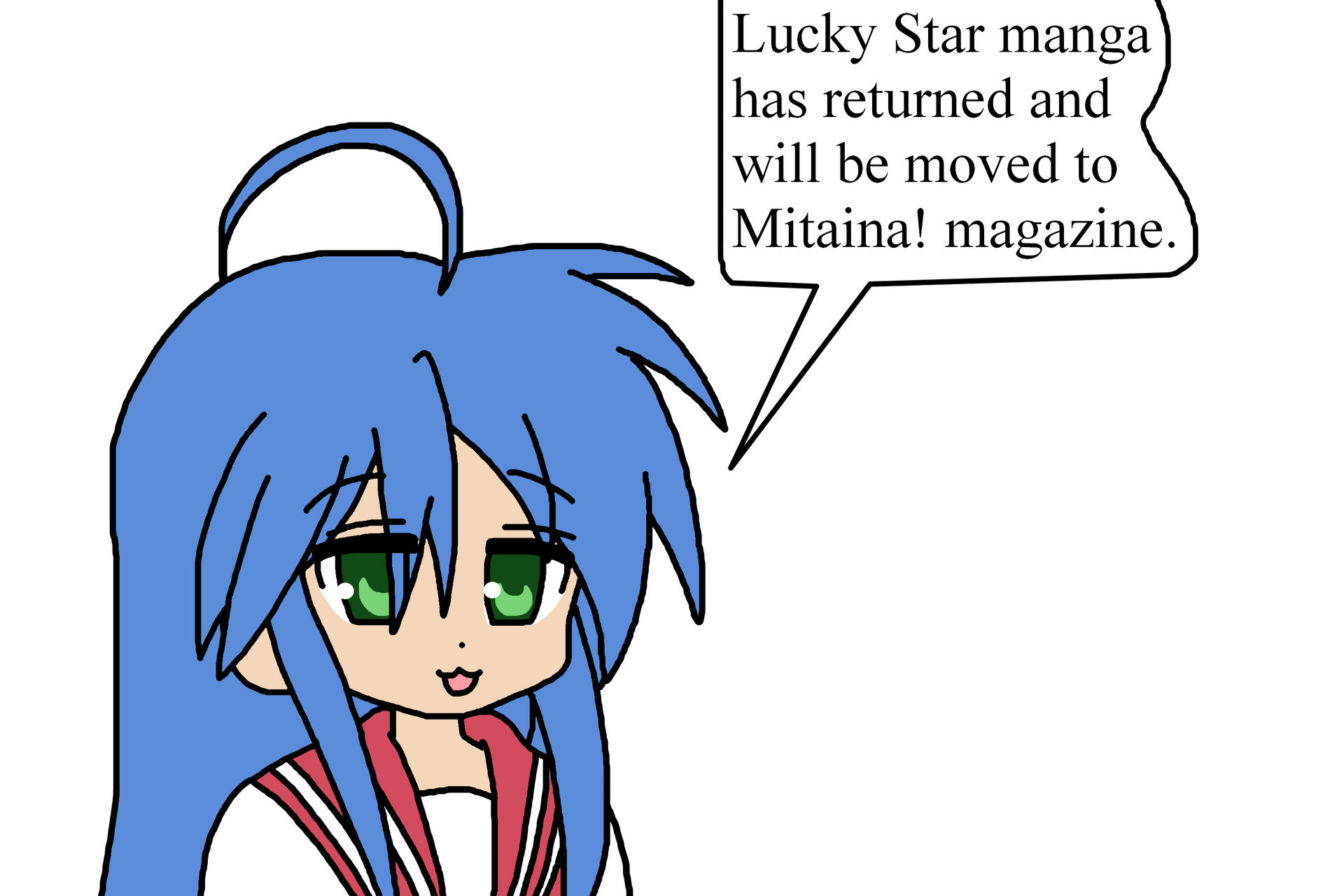Lucky Star manga totally blew up the slice-of-life genre! This ain’t your grandma’s manga; it’s a hilarious, relatable look at the daily lives of four high school girls, Konata, Kagami, Tsukasa, and Miyuki. Get ready for otaku culture references, inside jokes, and enough caffeine to fuel a small army. Seriously, it’s all about their quirky friendships, family drama, and the totally awesome (and sometimes chaotic) world of being a teenager.
We’re diving deep into the manga’s plot, character dynamics, artistic style, and cultural impact. We’ll explore its humor, satire, and the way it portrays female characters in a unique and relatable light. Think of it as the ultimate guide for anyone who’s ever felt a little awkward, a little nerdy, or just plain awesome.
Lucky Star Manga: A Deep Dive into Kawaii Chaos
Lucky Star, the manga series that launched a thousand moe-fueled memes, isn’t just another slice-of-life comedy. It’s a cultural phenomenon that cleverly blends relatable daily life with sharp satire, otaku culture references, and endearingly flawed characters. This deep dive explores the manga’s plot, characters, artistic style, cultural impact, and lasting legacy within the anime and manga world.
Overview of Lucky Star Manga
Lucky Star follows the everyday lives of four high school girls: Konata Izumi, a self-proclaimed otaku with a penchant for anime, manga, and video games; Kagami Hiiragi, Konata’s fiercely independent and tsundere best friend; Tsukasa Hiiragi, Kagami’s cheerful and somewhat ditzy younger twin sister; and Miyuki Takara, a shy and bookish girl who often serves as the straight man to the group’s antics.
The manga’s premise is simple: observing the mundane moments – school, eating, gaming, and hanging out – through the lens of these quirky personalities. The plot, if you can call it that, unfolds episodically, focusing on individual situations and character interactions rather than a central narrative arc.
Themes and Motifs in Lucky Star Manga
The manga expertly weaves together several key themes. Otaku culture is central, with countless references to anime, manga, and video games, making it instantly relatable to its target audience. Daily life, presented in its often-banal reality, is contrasted with the fantastical world of anime, highlighting the humor in the juxtaposition. Friendship is another major theme, showcasing the complex, evolving dynamics between the four girls.
The manga employs humor and satire to poke fun at everyday situations and stereotypes, often targeting otaku culture itself.
| Character Name | Personality Traits | Motivations | Relationships |
|---|---|---|---|
| Konata Izumi | Lazy, otaku, cheerful, optimistic, oblivious | Enjoy life, consume media | Close friends with Kagami, Tsukasa, and Miyuki; close with her father |
| Kagami Hiiragi | Tsundere, hardworking, competitive, fiercely independent | Excel academically, maintain independence | Close friends with Konata; sisterly bond with Tsukasa; friendly with Miyuki |
| Tsukasa Hiiragi | Cheerful, airheaded, energetic, supportive | Have fun, support her sister and friends | Close sisterly bond with Kagami; close friends with Konata and Miyuki |
| Miyuki Takara | Shy, bookish, observant, quiet | Maintain good grades, improve social skills | Friends with Konata, Kagami, and Tsukasa |
Cultural Impact and Reception of Lucky Star Manga
Lucky Star’s influence on anime and manga is undeniable. Its moe aesthetic and relatable characters contributed to the rise of the “cute girls doing cute things” subgenre. The manga received overwhelmingly positive reception from fans, praised for its humor, character development, and charming art style. Its contribution to the portrayal of female characters is significant, showcasing diverse personalities beyond typical anime tropes, although some might argue they are still somewhat archetypal.
- The iconic “nyaa~” sound effect gained widespread popularity.
- The series’ unique brand of humor influenced countless subsequent anime and manga.
- The characters’ personalities and relationships resonated deeply with audiences.
Comparison with Similar Works
While sharing similarities with other slice-of-life manga, Lucky Star distinguishes itself through its unique blend of humor, otaku references, and character dynamics. Compared to series like Azumanga Daioh, it features a more focused cast and a stronger emphasis on otaku culture. Unlike K-On!, it lacks a central overarching plot, instead focusing on episodic vignettes.
You also will receive the benefits of visiting a sign of affection manga online today.
Visual Elements and Design

Lucky Star’s art style is characterized by its simple yet expressive character designs and dynamic panel layouts. The use of chibi-style characters contributes to the overall comedic effect. The color palette, when applied, is vibrant and cheerful, enhancing the lighthearted tone.
A hypothetical alternative cover for a Lucky Star volume might feature a more dramatic composition, perhaps depicting the four girls silhouetted against a vibrant cityscape at night, each character subtly reflecting their personality through their pose and expression. This would maintain the series’ core aesthetic while adding a touch of sophistication.
Fan Reception and Community
The online fan community surrounding Lucky Star is vibrant and extensive. Fans engage in discussions about character interpretations, create fan art, cosplay, and write fanfiction. The series’ open-ended nature has led to numerous fan theories about the characters’ future and relationships.
- Debates on the true nature of Kagami’s tsundere personality.
- Speculation about the potential romantic relationships between the characters.
- Discussions about the underlying meaning of seemingly insignificant events in the manga.
Lucky Star manga isn’t just a comic; it’s a cultural phenomenon. From its influence on other anime and manga to its massive online fanbase, Lucky Star’s legacy is undeniable. It’s a testament to the power of relatable characters, sharp humor, and a story that resonates with readers on a deeply personal level. So grab your favorite snacks, settle in, and prepare for a wild ride through the world of Lucky Star—you won’t regret it!


